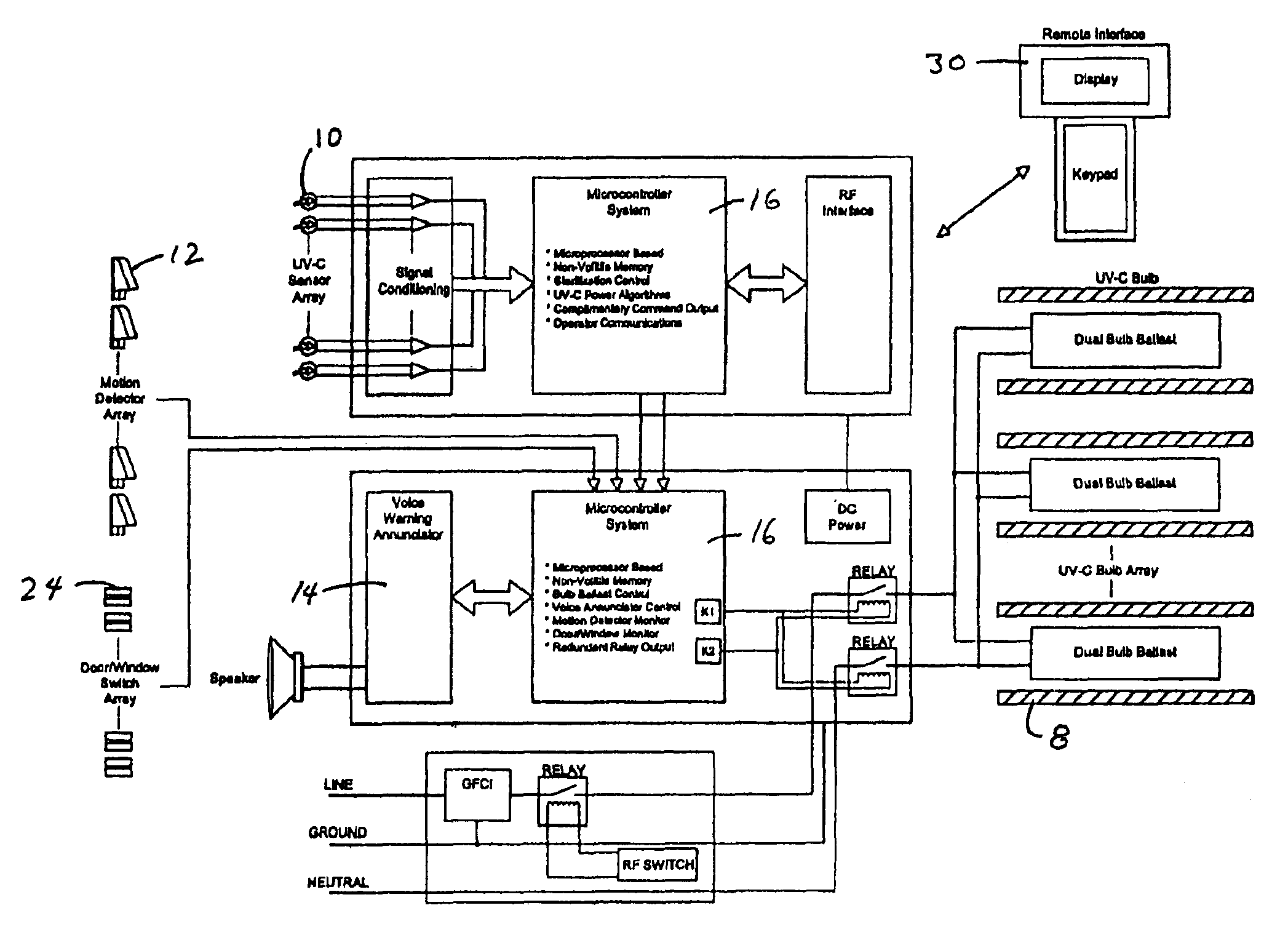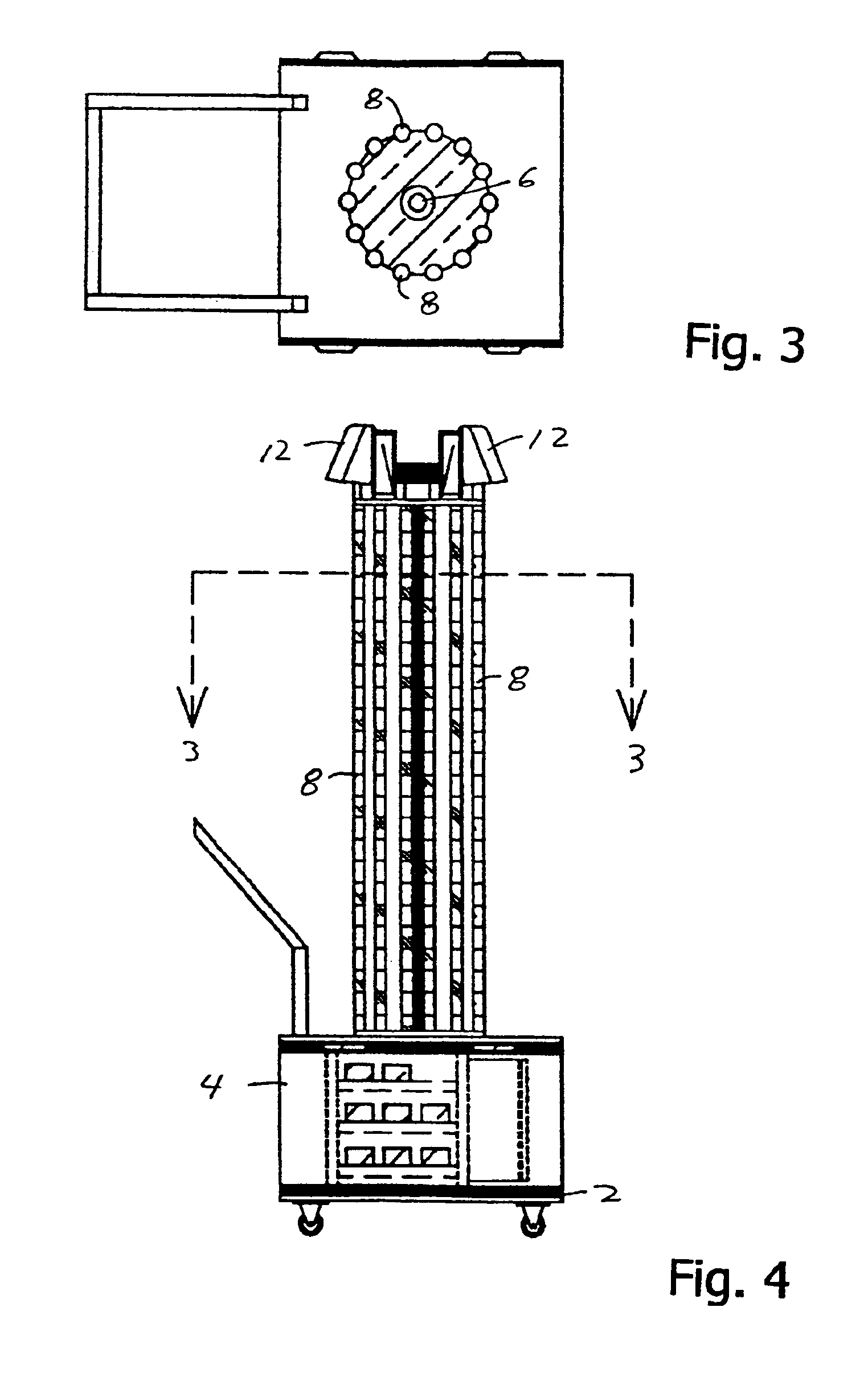Ultraviolet area sterilizer and method of area sterilization using ultraviolet radiation
a sterilizer and ultraviolet radiation technology, applied in the direction of material analysis using wave/particle radiation, chemical methods analysis, instruments, etc., can solve the problems of nocomial, hospital acquired, high cost, and sometimes lethal infections, and the use of antibiotics is overused, and the morbidity, mortality and cost are associated with these infections. significant, the effect of reducing the risk of infection
- Summary
- Abstract
- Description
- Claims
- Application Information
AI Technical Summary
Benefits of technology
Problems solved by technology
Method used
Image
Examples
Embodiment Construction
[0017]Referring now to the drawing figures, the UVAS is mounted on a rolling base 2 to provide portability. FIG. 2. An adjustable handle 3 is provided for transporting the device. The base includes a box 4 which could measure 30×20 cm, and in which is housed circuits, a power supply for the DC components, and the bulb ballasts. A central post rises 6 from the base to an overall height of, for example, 220 cm.
[0018]Around the central post are banks of UV-C emitting bulbs. In the embodiment as shown, six pairs of medium pressure mercury bulbs 8 are present, with each pair positioned equidistant from the pair on each side, so that they are present at 60° around the device. The bulbs may be 48-inch long, 115-Watt germicidal lamps that produce 300 microwatts of ultraviolet radiation at 1 meter. Each pair of bulbs is preferred to provide not less than 80° of coverage.
[0019]A control box on top of the unit contains wireless components, the UV-C sensor array 10, a bank of basic stamps, moti...
PUM
| Property | Measurement | Unit |
|---|---|---|
| height | aaaaa | aaaaa |
| area | aaaaa | aaaaa |
| reflection | aaaaa | aaaaa |
Abstract
Description
Claims
Application Information
 Login to View More
Login to View More - R&D
- Intellectual Property
- Life Sciences
- Materials
- Tech Scout
- Unparalleled Data Quality
- Higher Quality Content
- 60% Fewer Hallucinations
Browse by: Latest US Patents, China's latest patents, Technical Efficacy Thesaurus, Application Domain, Technology Topic, Popular Technical Reports.
© 2025 PatSnap. All rights reserved.Legal|Privacy policy|Modern Slavery Act Transparency Statement|Sitemap|About US| Contact US: help@patsnap.com



